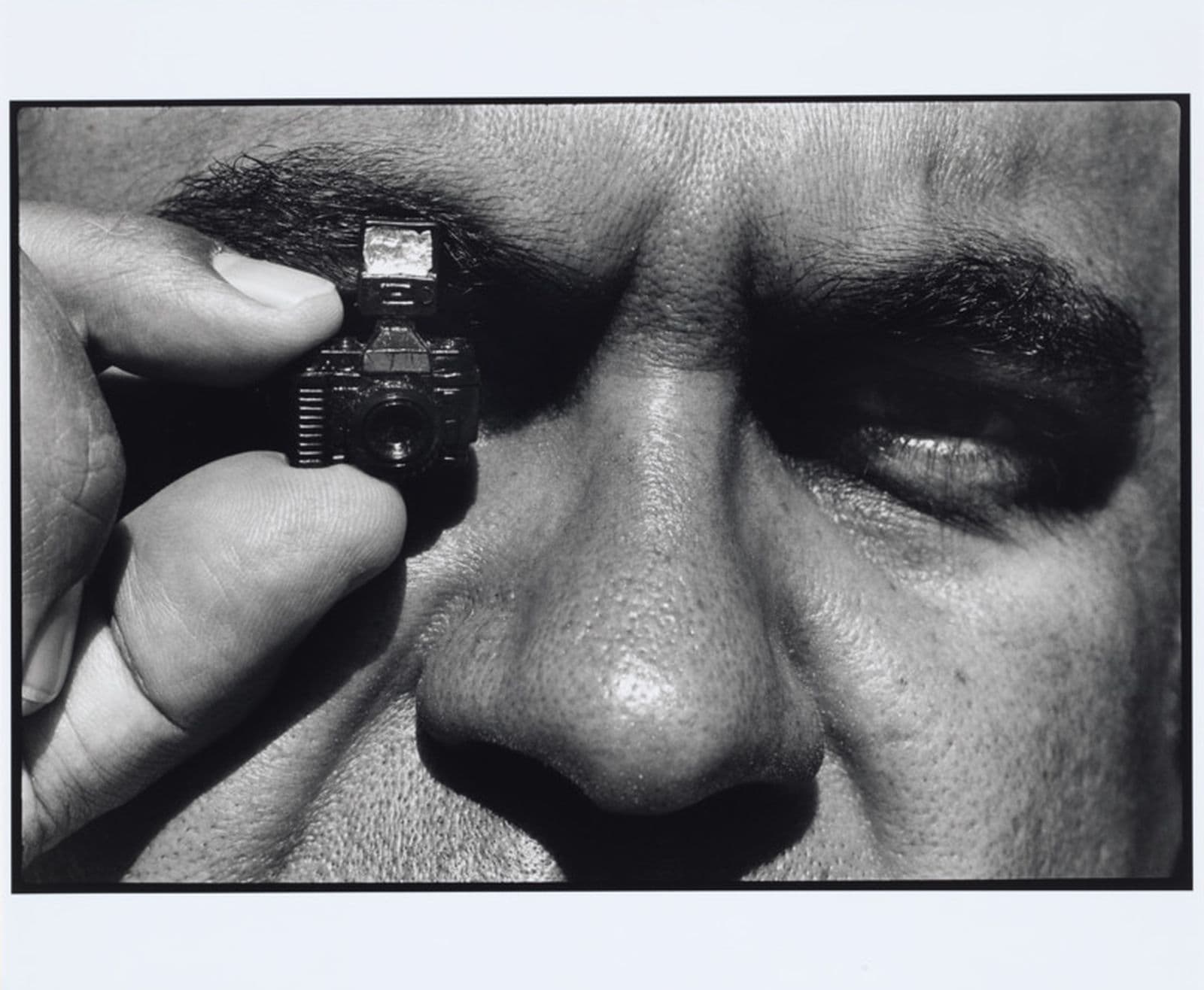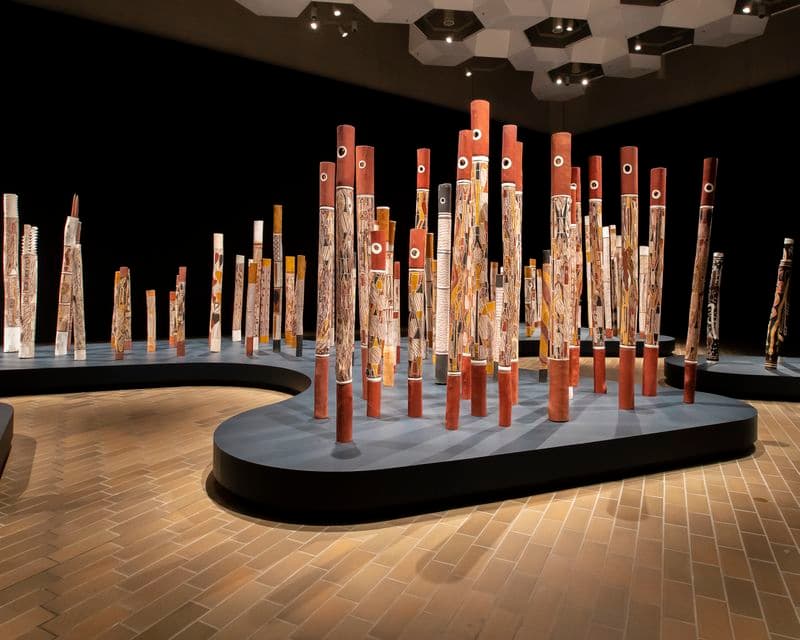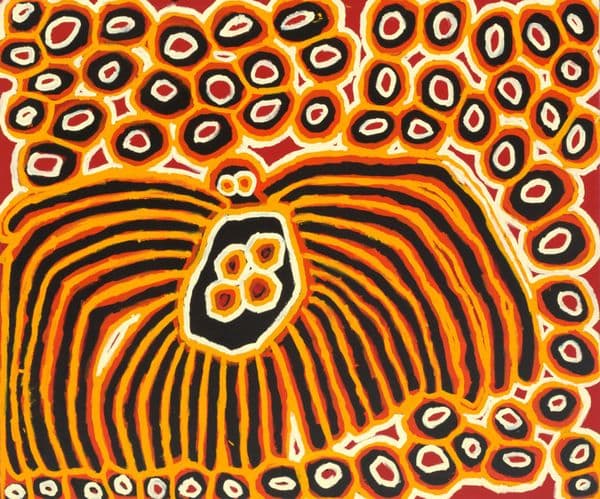First Nations

Mervyn Bishop, Murri people, Is there an Aboriginal photography?, 1989, 1989, National Gallery of Australia, Kamberri/Canberra, Purchased 1998. © Mervyn Bishop/Copyright Agency.
Key information
The National Gallery is committed to ensuring First Nations art, artists and culture are at the heart of the national cultural agenda.
The National Gallery is committed to building and maintaining meaningful relationships with First Nations peoples, artists, communities, organisations and cultures. First Nations art, artists and presences have taken an increasingly prominent role within the Gallery’s artistic and learning programs, while our First Nations Engagement portfolio works internally and with the broader arts industry to consolidate ethical engagement at all levels of the arts ecology while strengthening the position of First Nations art, culture and leadership across the nation.
Reconciliation Action Plan
The Gallery is enthusiastically embarking on our first Innovate RAP. We can’t wait to share our ambitions with you in 2023.
First Nations Advisory Group
In 2022 the Gallery launched an Advisory Group to help guide and provide feedback and advice on our First Nations programs and on all matters concerning First Nations art and culture across our business.
Art & Artists
Aboriginal and Torres Strait Islander peoples have lived on the continent of Australia for tens of thousands of years. Their art and cultural traditions are among the most enduring in human history and among the most exciting in contemporary society.
The National Gallery is custodian of the world’s largest collection of Aboriginal and Torres Strait Islander art, comprising over 7500 works, which embraces, reflects and amplifies the diversity of First Nations art and culture.
The Aboriginal Memorial
The Aboriginal Memorial consists of 200 dupun (hollow log coffins) from central Arnhem Land and is one of the most significant works in the National Gallery’s collection, and in Australian art history. It was created in 1987–88, in the lead-up to the Australian Bicentenary, by 43 artists from Ramingining and the surrounding area. Each pole marks one year of occupation and together they stand as a memorial to all Aboriginal and Torres Strait Islander lives lost to colonial and ongoing conflict and trauma in Australia from 1788 to 1988.
The path through the installation represents the Glyde River in central Arnhem Land. The poles are located along the river according to their specific homeland.
The Aboriginal Memorial is open in Gallery 9 on Level 1.

Ramingining artists, Djon Mundine, Bandjalung people, The Aboriginal Memorial, 1987–88, purchased with the assistance of funds from National Gallery admission charges and commissioned in 1987
Exhibitions
See current and upcoming First Nations exhibitions at the Gallery and on tour.
-
Ongoing
Level 1, Gallery 1–6
Free with ticket
-
2 Dec 2023 – 28 Apr 2024
Level 1, Gallery 12
Charges apply
-
2 Mar – 21 Jul 2024
Level 1, Galleries 2, 3 & 4
Free with ticket
-
Western Plains Cultural Centre, NSW
27 Jan – 19 May 2024
-
31 Aug 2024 – Oct 2025
Level 1, Gallery 1–6
Free with ticket
Past Exhibitions
View Exhibition ArchiveNational Indigenous Art Triennial
The National Indigenous Art Triennial is the National Gallery’s flagship exhibition of contemporary Aboriginal and Torres Strait Islander art. The National Indigenous Art Triennial is made possible through the continued generosity of the National Gallery’s Indigenous Arts Partner Wesfarmers Arts and key philanthropic supporters.
Wesfarmers Indigenous Arts Partnership
The National Gallery extends a special thanks to Wesfarmers Arts, the National Gallery’s Indigenous Arts Partner, for their extraordinary support of First Nations exhibitions and programs including the 4th National Indigenous Art Triennial: Ceremony, Ever Present: First Peoples Art of Australia and the Indigenous Arts Leadership and Fellowship Program.
Supported by
-
Wesfarmers Arts
Visit the website for Wesfarmers Arts

This Place: Artist Series
Made possible by the Australian Broadcasting Corporation. With thanks to Wesfarmers Arts, the National Gallery's Indigenous Arts Partner.
Learn
-
Primary & Secondary Learning Resource
Aboriginal and Torres Strait Islander Protocols
The National Gallery is committed to recognising Aboriginal and Torres Strait Islander cultural rights and engagement through its Cultural Rights Policy.
We understand that excellence shouldn’t only exist in the collection. The Gallery acknowledges that excellence is determined by the pursuit of meaningful and genuine collaboration with artists and their communities.
While we haven’t finalised our Engagement Protocols yet, you can find some templates, guidelines and more in depth information here, developed by the Australia Council for the Arts, and here, developed by the Australian Museums and Galleries Association.
Ethical Purchase of Aboriginal and Torres Strait Islander Art
In many Aboriginal and Torres Strait Islander communities, art sales are the main source of income. Making sure you always buy ethically and authentically is not just about protecting your investment, it’s about respect for the world’s oldest living culture, ensuring the artists and those around them are paid fairly and securing a sustainable future for Australia’s Indigenous art industry (see Indigenous Art Code).
Acknowledgement
//national-gallery-of-australia/media/dd/images/PREFERRED_Paul_and_Matilda_House_V2.tif)
Dr Matilda House and Paul Girrawah House, Ngambri/Ngunnawal peoples, with scar tree, Kamberri/Canberra, 2021 © the artists.
Developed as part of the 4th National Indigenous Art Triennial: Ceremony the acknowledgement video shown as visitors open the National Gallery website shows Ngambri/Ngunnawal Traditional Custodian Paul Girrawah House undertaking the traditional practice of tree scarring in Kamberri/Canberra, where the bark of a eucalypt is carved or removed to create cultural objects such as shields and coolamons.
Paul Girrawah House and Dr Aunty Matilda House’s tree scarring Mulanggari yur-wang (alive and strong) will be permanently featured in the National Gallery Sculpture Garden.


























//national-gallery-of-australia/media/dd/images/PREFERRED_Paul_and_Matilda_House_V2.tif)






